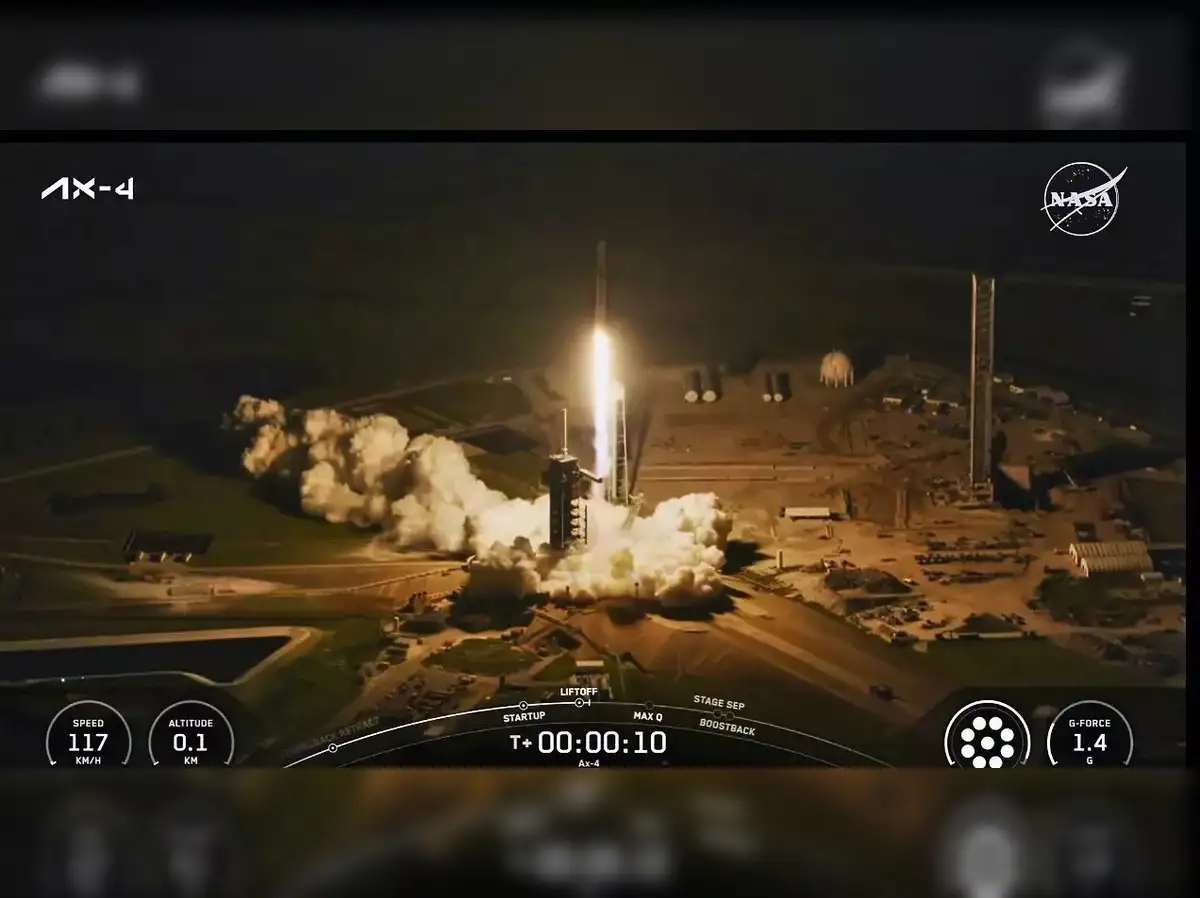
India gets Ax-4 effect: Start up for our Star Trek
How did your country report this? Share your view in the comments.
Diverging Reports Breakdown
India gets Ax-4 effect: Start up for our Star Trek
Axiom Mission 4 (Ax-4) embarked on a journey to the International Space Station (ISS) This marks a pivotal moment in the annals of space exploration. Ax-4 represents a monumental stride for India, as group captain Shubhanshu Shukla pilots SpaceX Dragon.Shukla is the first Indian astronaut to visit ISS, and only the second Indian ever to reach orbit, following captain Rakesh Sharma’s groundbreaking 1984 voyage aboard a Soviet Soyuz spacecraft. This mission signifies India’s re-entry into human spaceflight after a 41-year hiatus, underscoring a renewed national commitment and capability in this demanding domain. It will also inspire a new generation of young Indians to pursue STEM careers with exciting applications as a result of these exciting applications in space exploration, writes Amitai Agrawal, author of the book ‘India in Space: A Journey into the Heart of the Cosmos’ (Simon & Schuster, £16.99, Amazon.co.uk, www.economictimes.com)
Finally, after several hitches that pushed the original lift-off schedule of June 11 back by a couple of weeks, Axiom Mission 4 (Ax-4) embarked on a journey to the International Space Station (ISS). This marks a pivotal moment in the annals of space exploration. Ax-4 represents a monumental stride for India, as group captain Shubhanshu Shukla pilots SpaceX Dragon.Shukla is the first Indian astronaut to visit ISS, and only the second Indian ever to reach orbit, following captain Rakesh Sharma’s groundbreaking 1984 voyage aboard a Soviet Soyuz spacecraft. This mission signifies India’s re-entry into human spaceflight after a 41-year hiatus, underscoring a renewed national commitment and capability in this demanding domain, paving the way for its planned indigenous human spaceflight programme, Gaganyaan, in 2027, and establishment of an Indian space station by 2035.But Ax-4’s significance extends far beyond national pride. For India, it represents a crucial opportunity to gain invaluable hands-on experience in human spaceflight operations, crucial for the success of future missions. It isn’t alone in this renewed engagement with human spaceflight. Poland and Hungary – with Sławosz Uznanski-Wisniewski and Tibor Kapu respectively part of the crew, along with commander Peggy Whitson from the US – are collaborators. This shared trajectory across multiple nations illustrates a broader global trend of international collaboration in space exploration.Shukla’s role underscores India’s growing technical prowess. His year-long rigorous training, and selection as Ax-4 pilot, serving as second-in-command to veteran Nasa astronaut Whitson, is a testament to his rigorous training and exceptional capabilities. The scientific experiments Shukla will perform aboard ISS are equally interesting. They are not only crucial for future missions but also for general applications.Isro has lined up a set of 7 microgravity research experiments , with Shukla also participating in 5 joint studies planned by Nasa for its human research programme.Muscle-flexing A good example is ‘Myogenesis-Isro’ investigation. It is well-known that astronauts lose muscle mass during long spaceflights. Scientists suspect that microgravity interferes with metabolism in mitochondria, tiny structures within cells that produce energy. The experiment tests the muscle repair process in low gravity. The results could help people on Earth with age-related muscle loss, and assist athletes recovering from surgery.Daal moment ‘Sprouts-Isro’ experiment, led by an Indian group, will germinate seeds of green moong (greengram) and methi (fenugreek), which form the basis of common nutritious plant-based foods in the subcontinent, and that have therapeutic properties. Growing them in microgravity conditions will inform us how we can grow and use these foods in long-term space missions.Find the algaerithm Algae grow everywhere, and we will find them in space stations and in human bases on planets and their moons. They are also packed with nutrients. ‘Space Microalgae-Isro’ programme, to study how microgravity affects microalgae growth, can also assess whether growing them in space can produce a nutritional food source, and also regulate CO2 levels in closed systems.Super tardi-ness The ‘Voyager Tardigrade-Isro’ experiment involves tardigrades, tiny aquatic organisms that can tolerate the most extreme conditions on Earth. How will they fare in space, where cosmic radiation and ultra- low temperatures can kill most life forms? This investigation can help identify causes of their extreme resilience on Earth, and help in a wide range of research on humans, including that in ageing and disease resistance.Cosmo gizmo Finally, how do electronic gadgets and communication work in space? Humans interact with touchscreen devices differently in weightless conditions. Pointing and eye movements work differently in these conditions. Results could support improved design not only of control devices for future space missions, but also of regular aircraft flights and other more common situations on Earth.Knowledge gained from these experiments will be instrumental in fostering a robust microgravity research ecosystem in India.Ax-4 is more than just a satellite launch – it’s a statement of intent. It highlights India’s commitment to becoming a leading player in global space exploration. It moves beyond traditional bilateral government-to-government agreements, to a more complex, multi-stakeholder model involving commercial entities and multiple national space agencies. It will also inspire a new generation of young Indians to pursue STEM careers with these exciting applications as prospective career incentives.As India plans to establish its own space station by 2035, and achieve manned lunar landing by 2040, missions like Ax-4 will provide invaluable experience and insights into critical technologies and demonstrate its position as a major player in the global space arena. This mission is not just about reaching ISS. It’s also about charting a new course for human spaceflight, built on innovation, collaboration, and a shared vision for the future of humanity among the stars.The writer is vice-chancellor and professor of physics, Ashoka University, Sonipat, Haryana
